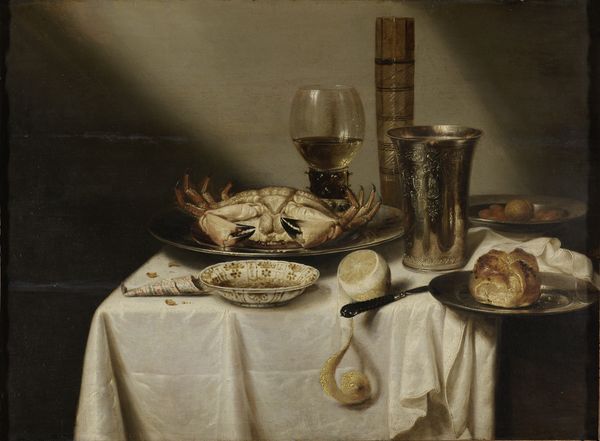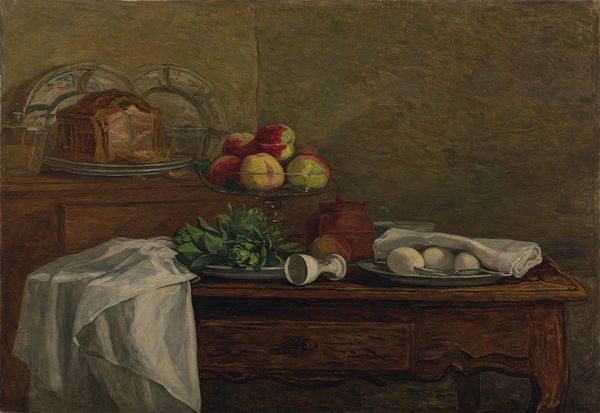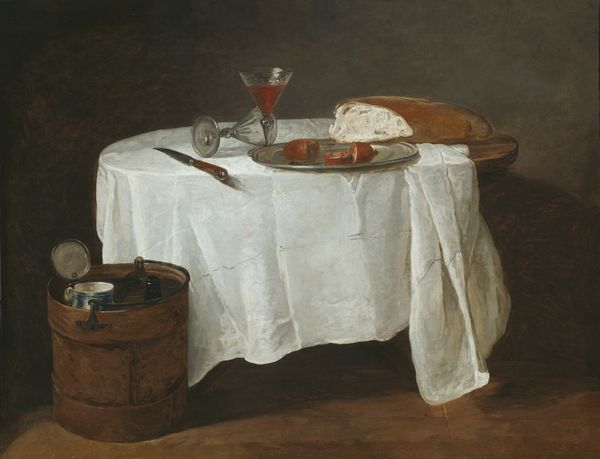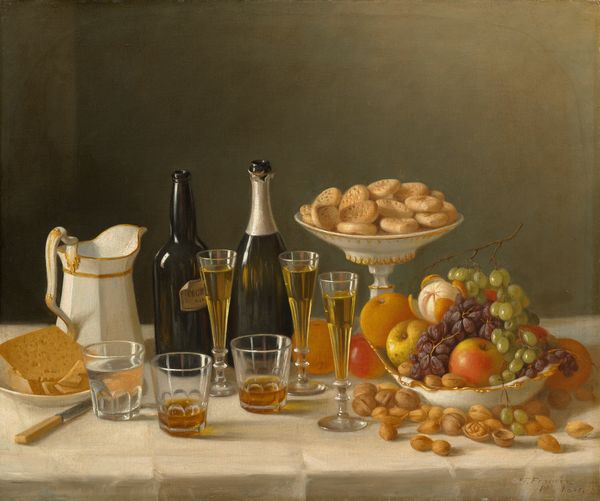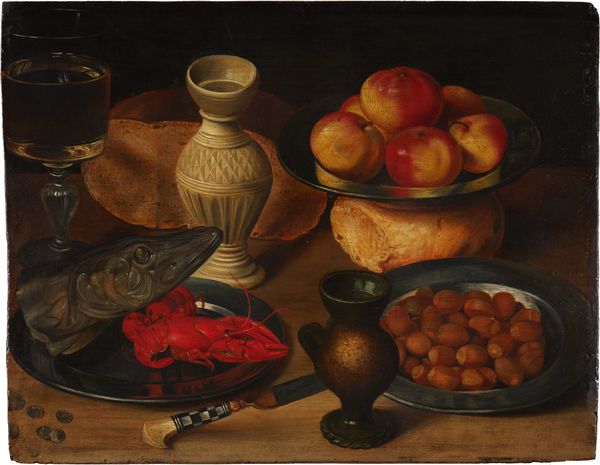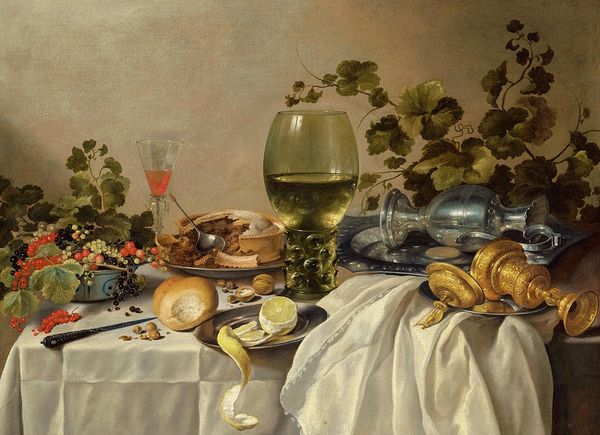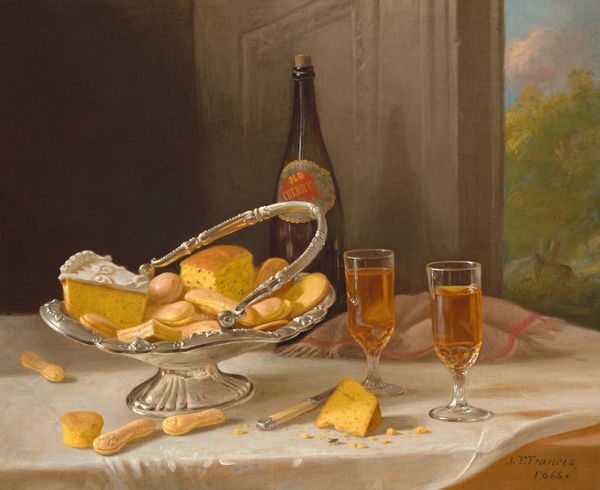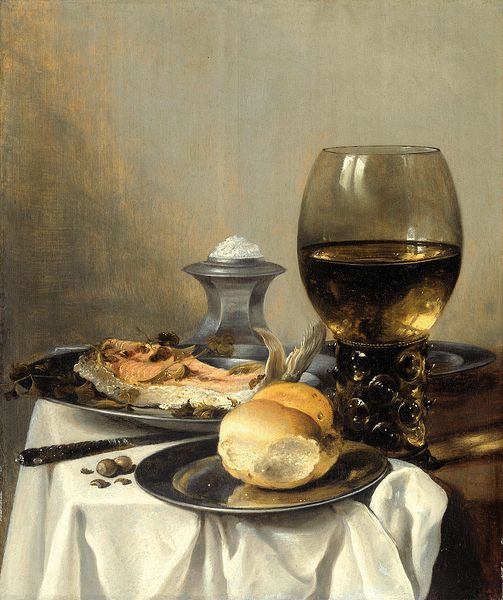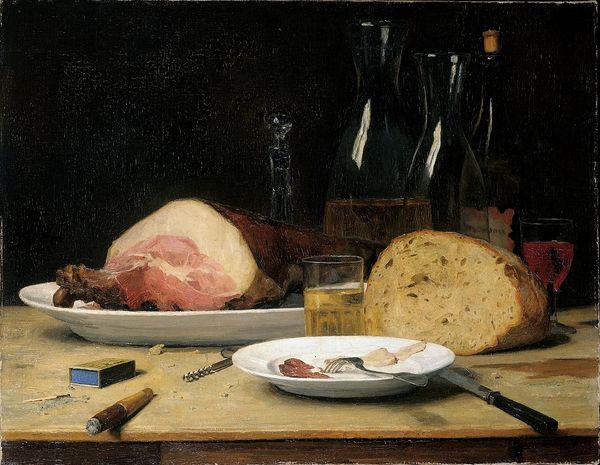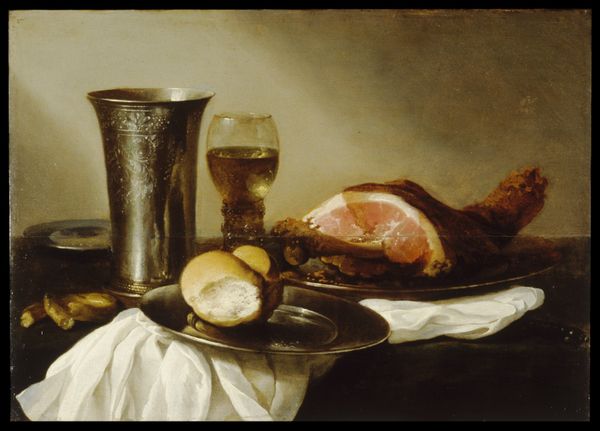
painting, oil-paint, impasto
#
painting
#
oil-paint
#
oil painting
#
impasto
#
genre-painting
#
realism
Dimensions: 51.5 cm (height) x 65.5 cm (width) (Netto), 75.5 cm (height) x 90.3 cm (width) x 8.1 cm (depth) (Brutto)
Curator: Looking at O.A. Hermansen's 1884 oil on canvas, "Et frokostbord"—"A Breakfast Table"—I'm immediately struck by the artist's masterful control of light. There's a subtle drama in how the luminosity accentuates the various textures: the smoky sheen of the fish, the creamy butter, the polished glassware. It whispers quiet luxury. What are your initial impressions? Editor: A lavishly-rendered tableau that prompts several questions: Whose luxury are we observing here? And at what cost does such a meal—replete with delicacies like fish, cheese, and wine—become accessible? Curator: A fair challenge. You might call this painting a straightforward still life, but Hermansen elevates it, no? He teases us with suggestions of a larger narrative. There's a pipe hanging in the background, and a newspaper casually thrown onto the table; these items hint at a world beyond the immediate indulgence. It's a fleeting glimpse into someone's morning ritual. What do you make of these genre elements? Editor: Well, genre paintings always exist within a set of social relationships; and those props offer an opportunity to dissect those relationships. Who is partaking of this meal? The implied smoker, likely a man; the reader of the newspaper, literate and thus also potentially of a higher class—so many clues pointing to possible answers. The composition of meticulously arranged consumables prompts us to consider who labors to produce and serve these goods. Is this "Breakfast Table" meant to simply capture the pleasures of a well-laid table or subtly comment on societal imbalances of consumption? Curator: I appreciate that friction; the picture may then become a social inquiry, though that might not have been Hermansen’s purpose. Editor: Perhaps not, but an artist does not necessarily have total authority on their artwork's function in culture. That being said, the material elements also bear weight; he seems very self-aware of this fact. He's not just painting things; he's painstakingly replicating different material realities—light filtering through the glass decanter, the delicate porcelain patterns of the dishware—these objects contain immense symbolic potency that speak to Denmark’s cultural relationship to empire. What’s your thinking on that aspect? Curator: Absolutely. Now I think both interpretations could comfortably co-exist within the bounds of this quiet, potent composition, this single scene of consumption—which, to me, opens onto broader issues of labor, gender, and colonial economics, making a simple meal a complex meditation on power. Editor: It’s amazing how a genre painting, which at first appears rather conventional, actually unravels itself, to invite questions of political importance today. Thank you!
Comments
No comments
Be the first to comment and join the conversation on the ultimate creative platform.
